GREATNESS
Norton Motorcycles are among the most popular, fastest, best handling and sexiest of all Classic British Motorcycles. The Norton Commando (1969-1977) was the world’s first production Superbike, and one of the most desirable machines of all time. It represented the best that the British motorcycle industry had to offer at the time. It was a genuine game-changer. Another game-changer was the Norton Manx, the 500cc single that dominated GPs and Isle of Man TT for over a decade. The Norton Dominator, Atlas, Norton International and Norton P11 are also part of the Norton Motorcycle story.
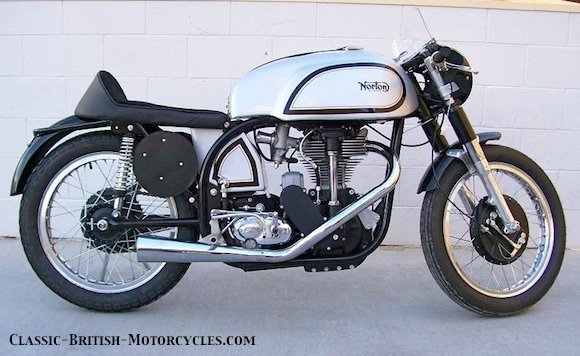
ABOVE: This 1953 Norton Manx GP Racer epitomizes Norton’s advanced technology for the day: Featherbed Frame, Road Holder forks, Dual Overhead Cam engine, it was all there…and it worked!
NORTON HISTORY
James Lansdowne Norton, started Norton Motorcycles in 1901 and began producing motorcycles in 1902 using French and Swiss engines. By 1907, Norton was winning TT races, including the first ever Isle of Man TT, which began a racing tradition that drove the company well into the 1960s. By 1913, the company was having financial difficulties, so Norton brought in Bob Shelley who brought with him his brother-in-law, Dan O’Donovan, who developed their first production race bike, the BS 490, and the die was cast. From then on, Norton would literally “Win on Sunday and sell on Monday”, using their racing victories as the basis of their entire marketing strategy. And apparently it worked.
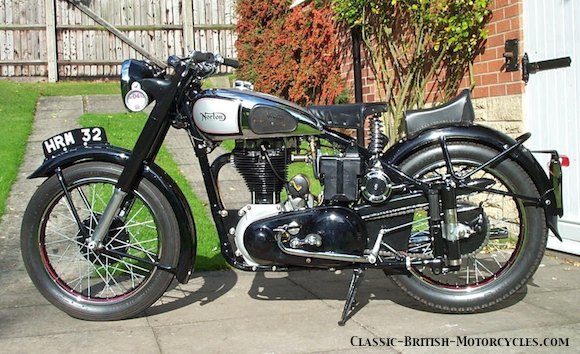
ABOVE: 1948 Norton ES2 in classic Norton colors, Silver and Black.
WARTIME PRODUCTION
James Norton died in 1925 at just 56 years old, but business, and racing were never better. In 1927 the Norton CS1 was released as a Super Sport Roadster and it was a hit! Racing successes continued throughout the 1930s under the able leadership of Joe Craig. While this lead to sales, Norton always seemed to be one step away from bankruptcy. When World War II broke out, Norton Motorcycles product line consisted of all single-cylinder machines, in side-valve, OHV and SOHC variants & despite being known for high performance bikes was commissioned by the War Department to build the primitive side valve Norton 16H. They produced over 100,000 units, which helped fill the company’s coffers.
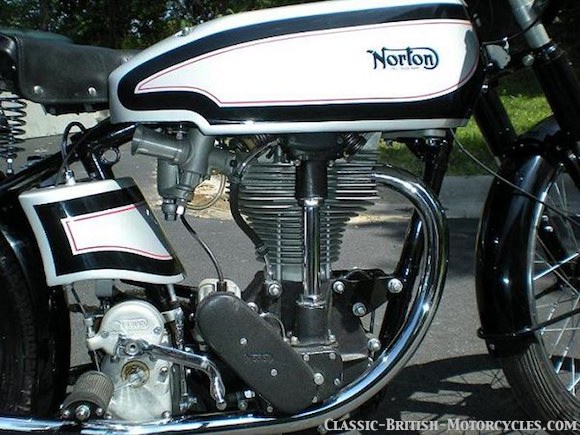
WAR ENDS, BACK TO BUSINESS
When the war ended, Norton went back to work making motorcycles for the civilian market. Most of the British home market was still made up largely of singles and Norton had several & development continued on them. In 1937 Triumph introduced their revolutionary Triumph Speed Twin 500cc, which set the pattern for every other vertical twin to follow for the next several decades. Norton needed a twin. In 1949 they introduced their 500cc Norton Dominator Model 7, designed by Bert Hopwood. By 1952, they’d added an alloy head & dropped it into the new Featherbed frame and created the Norton Dominator 88. Norton’s tradition for building fast twins was established.

FEATHERBED FRAME
The Featherbed frame was designed by Rex and McCandless for the 500cc SOHC single in 1950, creating the Norton Manx. When Norton Motorcycles racing team leader, Harold Daniels rode it for the first time, he described it as having a “featherbed ride”, and the name stuck. The Featherbed was state-of-the-art in its day and helped Norton establish itself as one of the best handling motorcycles in the world. This versatile frame served Norton until it was replaced on the Norton Commando with the new Isolastic frame in 1969. A further improvement to Norton’s already legendary handling brought with it yet another name, the “Roadholder” telescopic front forks, introduced in 1947.
A GENIUS IN THEIR MIDST
While Norton Motorcycles continued to flirt with insolvency, a few things did go their way. Leo Kusmicki was one of them. He had been in the Polish Free Air Force during the war and stayed on in England, taking a menial job at Norton, until it was discovered that he was one of Poland’s top experts on internal combustion engines. Craig quickly set him to the task of modernizing the fleet. He massaged the 350 single from 28hp @ 7200 rpm to 36hp @ 8000 rpm. He later did the same with the 500 singles. Another lucky break was Geoff Duke, who rode the Norton Manx to victory in 6 World Championships, 5 Isle of Man TT s and number Junior & Senior TTs. By 1955, further financial woes forced Norton to stop racing and put its focus on sales. However, lots of privateers continued to race and win on Nortons.

ABOVE: This 1957 Norton Dominator combines the Featherbed frame with Roadholder front forks and the robust Norton twin engine.
AMC TAKES OVER NORTON
By 1952, Norton was in trouble again. Always on the edge anyway, the switch over to the world-beating Featherbed frame carried with it some problems. First off, buyers were reluctant to buy the old models once word got out about the new Featherbed Nortons. Secondly, the frames were welded out of Reynolds 531 steel tubing, which was very hard to come by in the early 1950s. Shortages of the stuff lead to supply problems that held up & limited production to such low numbers that Norton couldn’t make a profit. In 1953 AMC (Associated Motor Cycles Ltd.), owners of Matchless and AJSamong others, stepped in and took over Norton Motorcycles. At first they left well enough alone & Norton benefitted somewhat from their economy of scale & some parts bin sharing. But, AMC’s management style, soon to be their own undoing, wasn’t very good for Norton either.
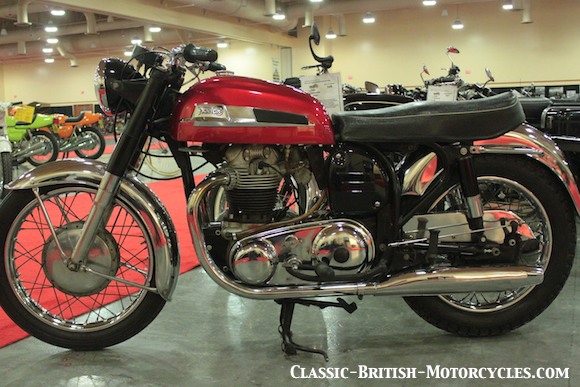
ABOVE: The 750cc Norton Atlas followed the 650cc Dominator. This one is a 1966 Atlas.
A NEW TWIN
While the Norton Manx remained in production until 1962, the real business was in twins. Triumph, BSA, Matchless-AJS and Royal Enfield were all doing big business with their vertical twins. Norton had already had a solid line of successful twins, the Norton Dominator series, from the 500cc 1949 Norton Model 7, to the Norton Model 88 produced until 1966. They even punched it out to 650cc for the 1962-68 Norton Dominator 650SS. But even this wasn’t enough. They punched that engine out again (68mm X 73mm) to 750cc for the Norton Atlas series, 1962 through 1968, all with the now-legendary Norton Featherbed frame. This frame was so prized for its excellent handling that people would adapt other engines to it in hybrids that became known by names like Norvin (Norton Featherbed frame with a Vincent engine) and Triton (Triumph engine and Norton Featherbed frame).
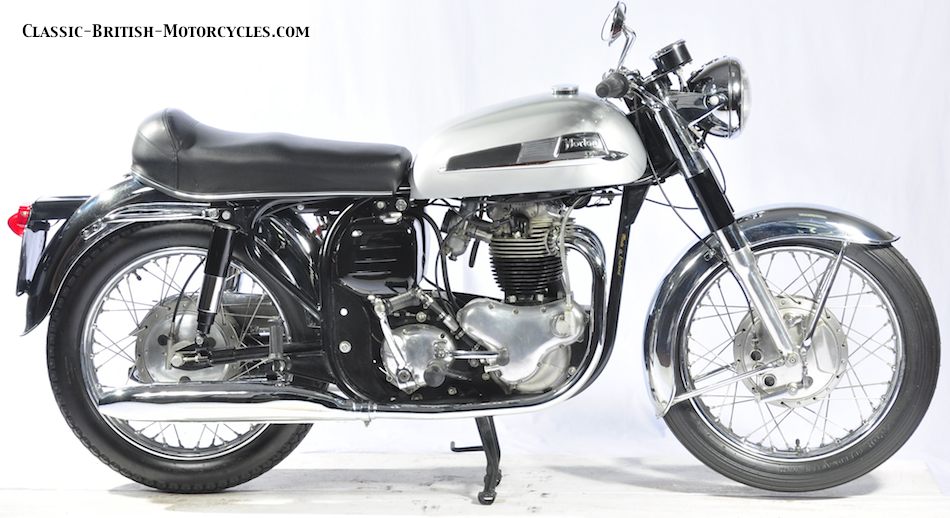
ABOVE: 1969 Norton 650SS was one of the last Nortons to use the Featherbed Frame.
GOOD VIBRATIONS
But no matter how good the handling, as the engine & its power output grew, so did the problem of vibration. It was the same one that vexed all makers of vertical twins in those days, meaning the British motorcycle industry as a whole. By 1966, Norton owner, AMC was now itself in trouble & was bought up by Manganese Bronze Holdings Ltd, owners of Villiers & Norton-Villiers was established under the leadership of Dennis Poore, a true motorcycle enthusiast. This was a welcome change since many of the former AMC board were not. The new owners infused much-needed capital & launched a development program that would ultimately spawn the Norton Commando, under the direction of Dr. Stefan Bauer of Villiers. He set out to tackle the biggest problem that all Norton Motorcycles faced: vibration.
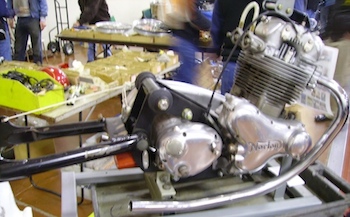
ABOVE: Isolastic Suspension as used on the Commando rubber-mounted the engine and swing arm to the frame to isolate the rider from typical vertical twin vibration. It worked!
ISOLASTIC SUSPENSION
His solution was quite revolutionary at the time. Essentially, he suspended the entire engine-gearbox package on rubber mounts, attached the swing arm pivot to the back of the engine to keep the chain travel constant & to give the vibration a path to the ground (out the back wheel). He called it Isolastic Suspension & it made the new 1969 Norton Commando750 an overnight sensation! The Norton Commando became the seminal Norton and the sole model that carried it to its demise in 1975. In 1973, the ancient vertical twin that started out life at 500cc in the 1949 Norton Model 7, had been punched out to 600cc for the 1956 Norton Model 77 & Model 99, then again to 650cc for the 1962 Norton Dominator 650SS, and yet one more time to 750cc for the 1962 Norton Atlas, was yet again enlarged, this time to 850cc for Commando duty. In 1975, it grew an electric starter, then died shortly thereafter. Norton was in receivership by 1975, control of the factory jostled back & forth, but a few more Commandos trickled out in 1976 and 1977, with the last few finally being sold as 1978’s.
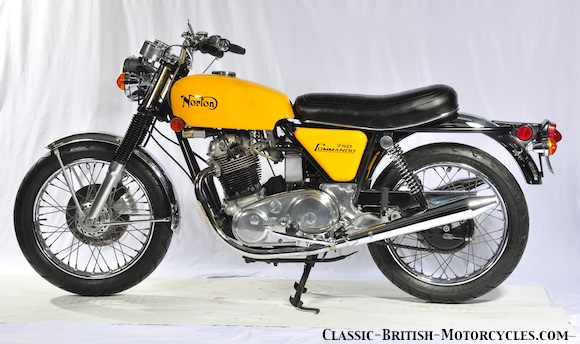
COMMANDO HITS THE GROUND RUNNING
The Commando was a big hit for Norton Motorcycles, and by the standards of the British motorcycle industry of the day, it was. However, it was never produced in huge numbers when compared to the prodigious output of the Japanese Big 4. It’s not like anyone who was a typical Honda buyer would be cross-shopping any British twin. But the Commando appealed to a very definite niche. First off, it was an elegantly handsome machine, with the appearance of being beautifully crafted. It was fast, in fast at one point, the fastest production bike in the world. It’s handling was the envy of the entire motorcycle industry. And thanks to Isolastic Suspension, it was even smooth. It was also expensive, but people didn’t mind paying a little more for something so special. In it’s lifespan, 1969 through 1977 or so, the Commando spawned numerous sub-models and/or bodystyles. The Fastback was the first to be introduced in 1969, and had a cafe-style fiberglass rear fender and special seat. Next up was the Roadster in late 1969, considered the standard version, and the one most people think of when you say “Commando”. The Interstate was a long-range touring version with a larger fuel tank and bigger seat. The crazy Hi-Rider was Norton’s attempt at a factory chopper, at which they failed miserably. The Production Racer looked like an all-out racer with long tank, bumstop seat, half fairing, clip-on handlebars and rearset pegs. Finally, the John Player Norton (JPN) was a holomogated factory road racer, at least in appearance. While looking all the park with it’s full fairing, big tank, low bars and dual headlights, both the JPN and the Production Racer were basically stock Commandos, mechanically identical to every other other. They were all essentially appearance packages, brilliantly executed, and produced in sufficiently low numbers. In this same time, Norton experimented with a short-stroke engine, and the radically-tuned “Combat” engine, which only seemed to do combat with it’s own internal parts, as they were prone to constant problems. The venerable old twin engine that started out as a 500, then grew to a 650, then a 750, was punched out again to an 850 in 1973. Within a few short years it would be consigned to the history, along with every other classic British motorcycle.
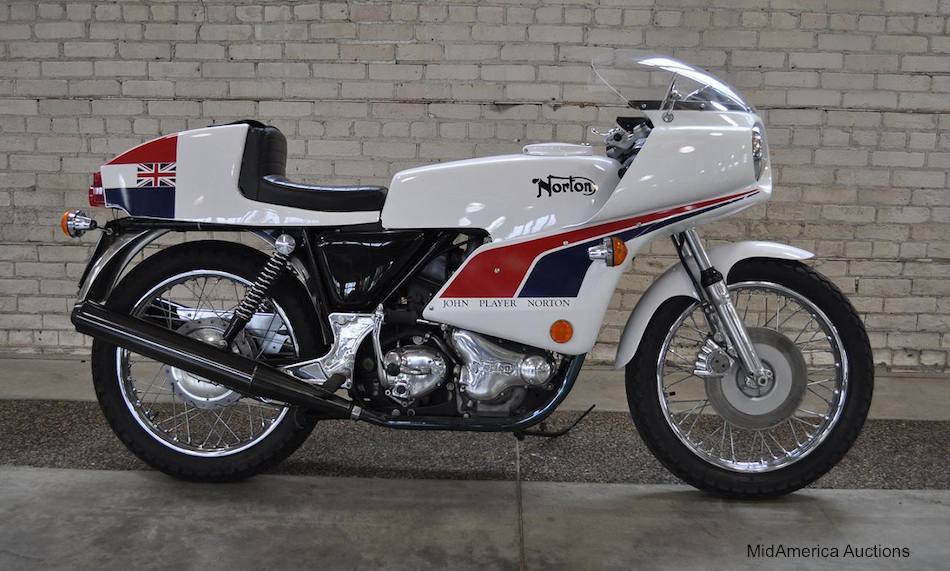
ABOVE: The John Player Norton resulted from the British cigarette company’s sponsorship of Norton’s racing efforts. While looking the part of a true race machine, they were in fact stock Commandos underneath.
A NEW NORTON?
Rumors have been circulating about the rebirth of Norton, along the same lines as the new Triumph Motorcycles. In 1998, Norton Motors GmbH of Germany produced a limited number of bikes under license to call them Nortons & commemorate 100 years of Norton motorcycle production. The Norton Supermono C652SM International used a 652cc Rotax single cylinder engine (same as in the BMW 650 singles) & a British-made Tigcraft frame. Currently, a new UK company, Norton Motorcycles Ltd. has just produced (April 2010) a limited run of 200 of the Norton Commando 961. This 961cc pushrod parallel twin is a new design by MCT & boasts 80 hp. I have personally seen two samples up close, one yellow, the other black. Both were stunning-looking bikes, totally modern & yet instantly recognizable as a Norton.
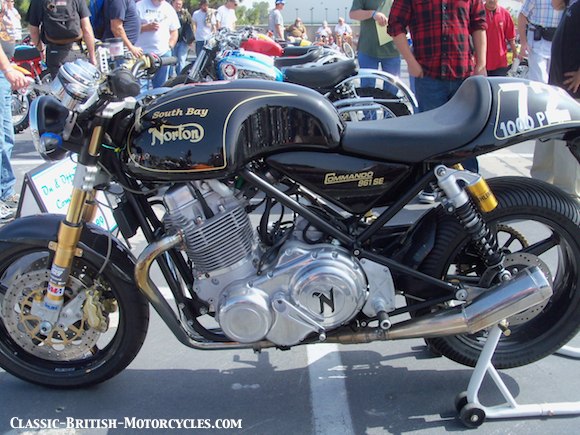
Norton’s SMALLER TWINS
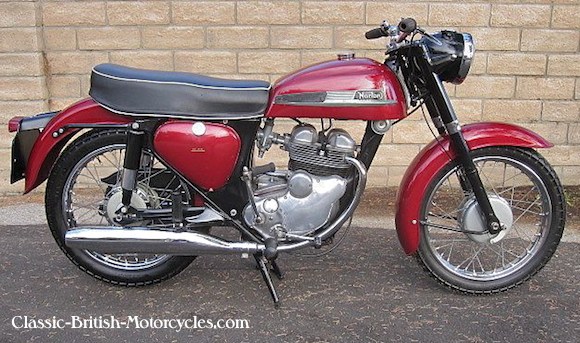
NORTON JUBILEE, 1958-1965
Named to honor Norton’s Diamond Jubilee (60th anniversary) the 249cc Jubilee arose from a change in British law in 1958, limited all new motorcyclists to no more than 250cc displacement. Overnight, this created an entire new market, and a very desirable one at that, considering that all those new riders who trained on a Norton might graduate up to a new Norton Atlas someday. The layout was a complete departure from normal Norton practice. Besides being the smallest engine Norton would ever make, it was also the first with Unit-Construction (ie: the engine and gearbox contained in the same unitized housing). Bert Hopwood, who would later move to Triumph and among many other things, helped to design the 3-cylinder Trident, designed the Jubilee’s compact 249cc air-cooled parallel twin engine, which proved problematic from the start. It used a frame and gearbox from older motorcycles in parent-company AMC‘s inventory, and the forks, wheels and brakes were straight off a Francis-Barnett. With just 16 horsepower (which needed high revs to achieve) and 300 pounds of curb weight to pull, it wasn’t very fast. But, it was a good looking bike, probably more so than just about any other 250cc offering at the time, and it had the panache of the Norton name.
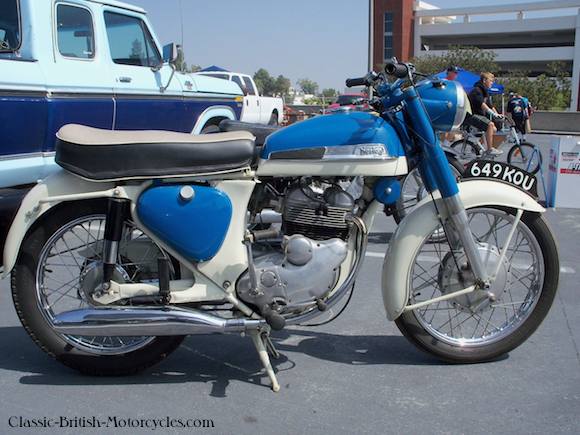
NORTON NAVIGATOR, 1960-1965
The Jubilee’s 249cc engine was bored and stroked-out to 349cc, bumping engine output to 22 horsepower and the top speed to 80 mph. They came dressed out in a”bathtub”-style enclosed rear section, heavily valanced fenders, and could add optional fairing, windscreen, leg guards and panniers. As such, it had an almost fully-enclosed look, which was quite popular in England at the time.
The New “Donington Nortons”

ABOVE: This 2014 Commando 961 Sport packages a totally modern machine into a bike that is instantly recognized as a Norton Commando.
THE “NEW NORTON”
When the classic Commando went out of production in 1975, a battle over the rights to the name ensued. Ultimately UK business man Stuart Garner, who already owned Norton Racing Ltd acquired the rights to the Norton Commando brand. His new company, Norton Motorcycles Ltd, he commissioned Simon Skinner to design the new bike, and built a state-of-the-art factory in Donington Park, Leicestershire, England to produce them. It took until 2010 for the first production bikes to hit the market, at an initial rate of around 5 to 10 bikes per week. These, the first Norton Commandos in 30 years were available in three models: The 961 Sport, 961 Cafe Racer, and the 200-unit limited edition 961 SE. Norton is still building high-quality bikes in England, in limited numbers, maintaining strong demand. The motorcycle press loves the bike also.
Norton Rotary Bikes
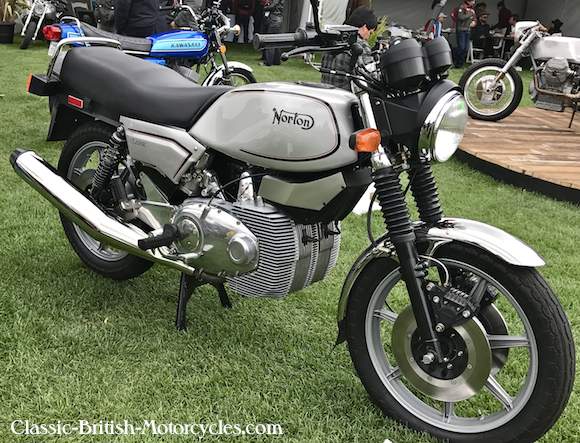
Norton Motorcycles has a rich history of building twin-rotor powered motorcycles, but always in low volumes. First for the UK police with the Interpol in 1981, with 350 units sold to around 30 police depts. Next up was the Classic Rotary (pictures above) in 1987-88 with a total of 100 built. They couldn’t sell them back then, but today they’re prize gold at auctions where their sheer oddity plus their extreme rarity are driving bidding prices through the roof. Norton’s work with rotaries didn’t end there though. From 1989-1994 they produced a twin-rotor road racing bike with an engine based on the Classic, called the RCW588, culminating in winning the 1994 British Superbike Championship. There was also a water-cooled twin-rotor Commando street bike from 1988-1992, with 253 units built.
Norton Motorcycles MODEL-BY-MODEL
COMMANDO
750cc: 1969-1973
850cc: 1973-1975
Seminal Norton Motorcycle, the Norton Commando started out with a Norton Atlas 750cc engine, slanted it forward for a new look, then dropped it into a whole new type of frame, with Isolastic Suspension to fight vibration. A huge hit for Norton.
NORTON MANX
350cc & 500cc SOHC: 1947-1949
350cc & 500cc DOHC: 1949-1963
By the late 1940s, singles were being outclassed by the new twins on the racetrack. The Norton Manx got a new lease on life with the Featherbed Frame in 1950. Manx’s dominated the Isle of Man TT & GP races all over Europe.
NORTON MODEL 7
500cc OHV parallel twin: 1949-1955
Norton’s first parallel twin, the Model 7 engine was the basis for every Norton twin to come after, all the way to the Commando. Plunger suspension through 1952, then swing-arm.
The Norton Atlas was Norton’s first twin using the Featherbed frame. Fast, great handling, but vibration was a problem.
ATLAS
750cc OHV twin, 1962-68
The Norton Atlas featured Norton’s tried-and-true vertical twin punched out to 750cc in a Norton Featherbed Frame. It made 49 hp, handled great, but vibrated badly. It replaced the Norton Dominator series in 1962 & was itself replaced by the Norton Commando in 1968.
MERCURY
650cc OHV twin, 1968-1970
Classic Norton twin 650cc engine in Featherbed frame. 3 model-years only, overlapping intro of the Commando.
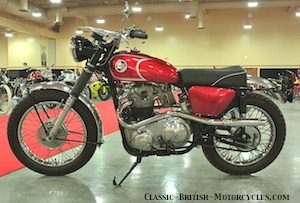
NORTON P11
750cc OHV: 1967-1969
The Norton P11 was actually a Norton Atlas 750 engine in a Matchless frame. Originally cobbled together by US Norton distributor Berliner Motors, it was a capable ‘desert sled’ & did well in off-road racing until lightweight 2-strokes took over.
1951 INTERNATINAL
The road-going version of the 500cc OHC race bike.
JUBILEE
249cc air-cooled OHV twin
1958-1965
Born of the 250cc Learner Rule, designed by Bert Hopwood, plagued with problems early on, it had the smallest engine Norton ever made.
NAVIGATOR
349cc air-cooled OHV twin
1960-1965
Bored & stroked out to 349cc, it could top out at 80mph. Enclosed bodywork. Many of the earlier problems solved.
NORTON ROTARY MOTORCYCLES
After the death of the classic Commando, Norton started building Wankels, generations of them.
NORTON SINGLES
1947 Norton 350T
500cc: Model 18/ES2, 1922-54
600cc: Model 19/19R(rigid)/
19S(sprung)1925-58
350cc: Model 50, 1933-63
500cc: 500T, 1949-54
500cc: ES2, 1928-1963
All years, all types, from mild to wild. Cafe racers are customized bikes, personalized statements usually built by their owners.
Interview w/NORTON EXPERT, Phil Radford
Phil Radford of Fair Spares America is the US distributor for Norvil, the exclusive source for all authentic Norton OEM parts. Mail order, a huge parts inventory, repair to full restoration, custom machine work, all specific to Norton Motorcycles.
Check out these NORTON BOOKS
Norton Motorcycles: From 1950 to 1986 (British Motor cycles since 1950)
Norton Commando: The Complete Story (Crowood Motoclassic Series)
The Norton Commando Bible: All models 1968 to 1978
The Illustrated History of Norton Motorcycles (English and Spanish Edition)
Norton (Osprey Collector’s Library)
Norton Dominator Performance Portfolio 1949-1970
Norton: The Complete History (Crowood MotoClassics)
For more like this, please visit our
 |
PLEASE BUY MY NEW E-BOOK HERE 12 Chapters & over 100 original photos. My best work yet. ONLY $4.99! Thank you, Andy Tallone, your humble author Click here to buy now: |


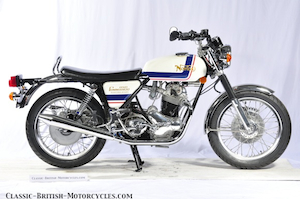
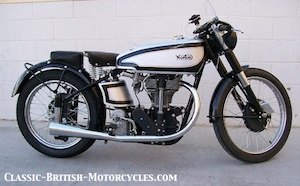
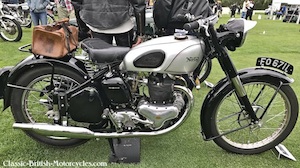
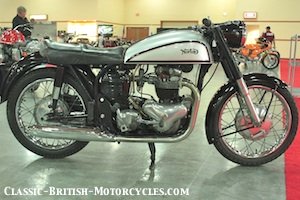
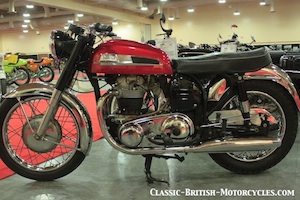
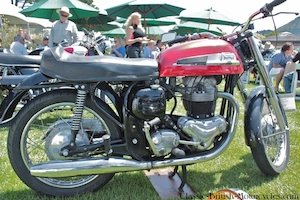
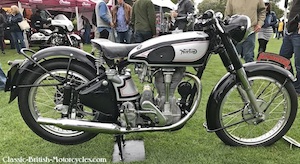
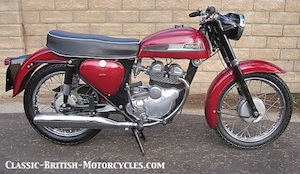
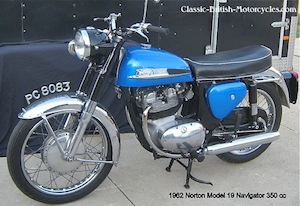
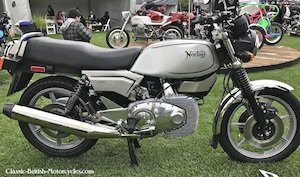
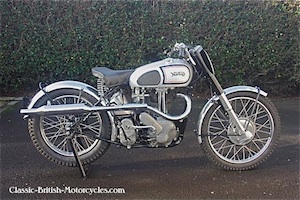
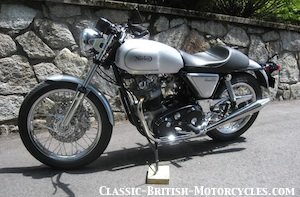
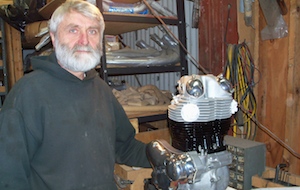












well you need to go back and read Norton history better as you missed half the models out and the first Norton twin in a featherbed frame came about in April 1950 and by September of 1950 the model 88 was being exported in the featherbed frame it came to the home market in September of 1953 the next model was the model 99 that came about in September of 1955 for export and home market the next model was the Norton Manxman 650 built from late October 1960 to august of 1961 the next model was the Norton Atlas built from April 21st 1962 on to 1967
now for forgotten Norton twins were the 1950/51 model 77 500cc in the diamond frame for export only next was the 1957 to 1960 Norton Nomad 500cc and 600cc twins versions all of a off road bike all for export
Hi we seem to be missing the Norton electra a 400cc electric start i think this was for the export market, i have one.